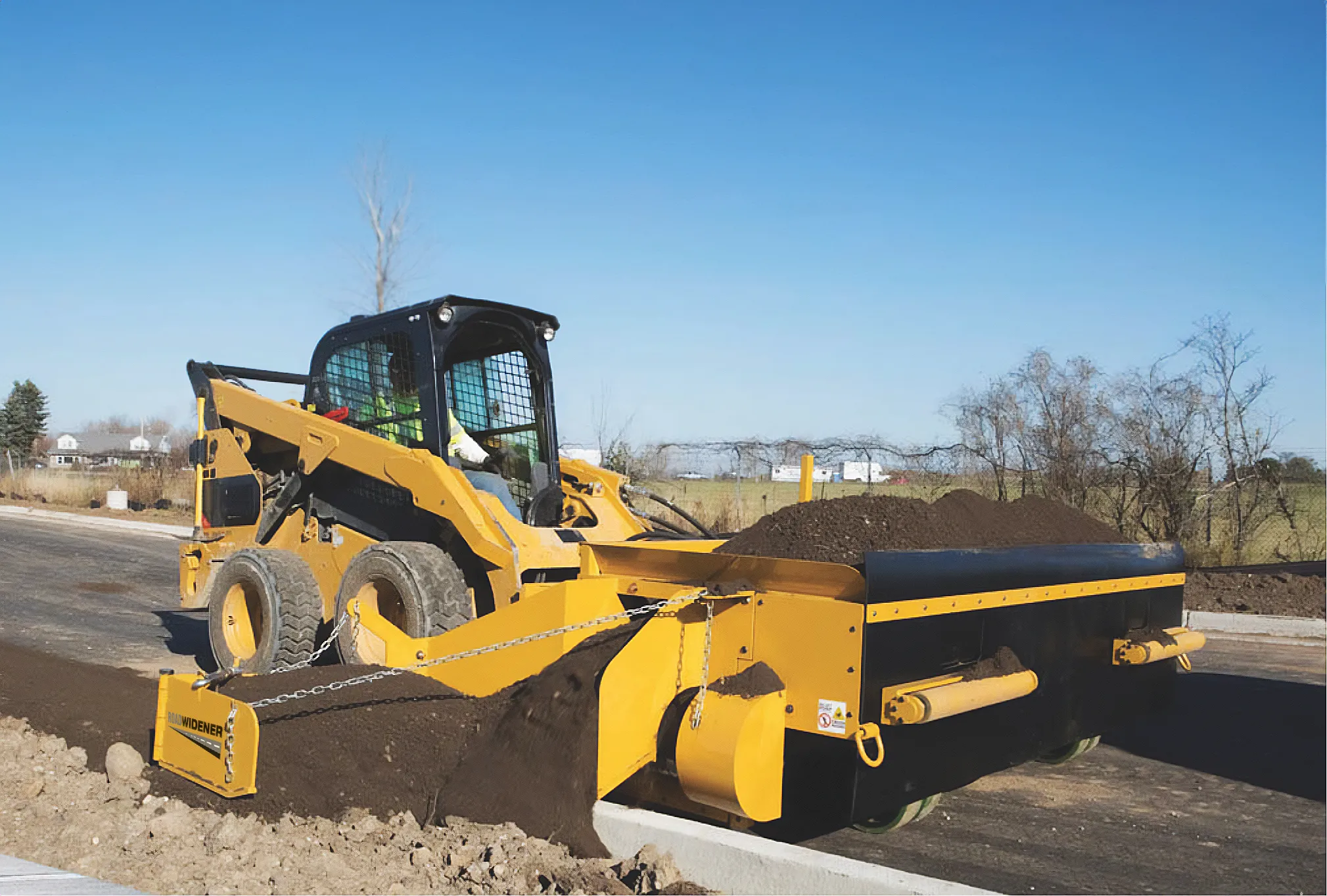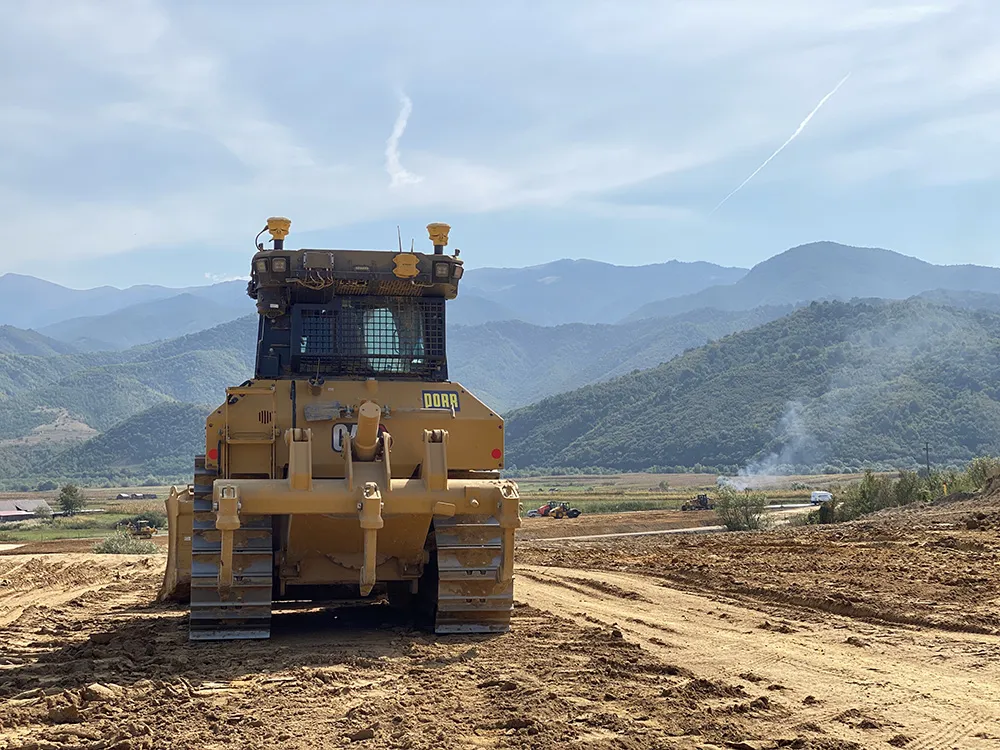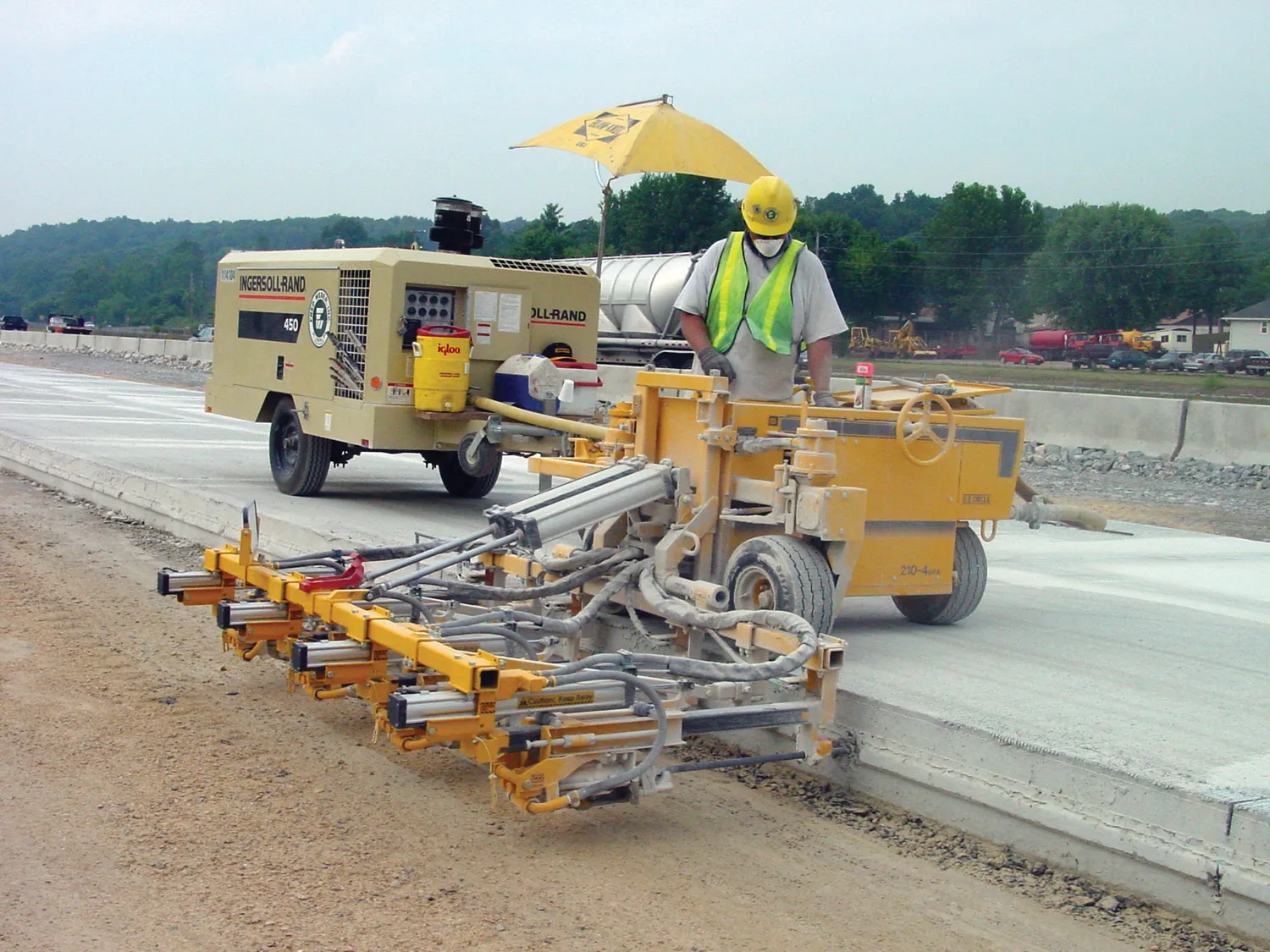
Road Widener, a US manufacturer of road and utility construction equipment, has developed its Curb Backfiller accessory for the company’s FH-R material placement attachment.
The accessory extends to the left or right of the FH-R and precisely dispenses material over the curb to backfill with dirt or aggregate.
Paired with the FH-R, the Curb Backfiller boosts efficiency, accuracy and safety by replacing a backfilling method typically done manually by workers with shovels. Crew members can operate it with the original FH-R remote, improving convenience and reducing the number of needed labourers to just one.
“We recognise the tremendous labour shortage our customers are facing and it’s taking a toll on their ability to complete work,” said Jeremy Dehnel, Road Widener’s director of sales. “We have always sought to design solutions to limit labour and increase safety. “The Curb Backfiller accessory accelerates project timelines, increases safety and cuts out unnecessary steps in the backfilling process.”
The Curb Backfiller easily attaches to the FH-R and can fill on the right hand side by default, or the left, with dual configuration. It provides a cleaner, more accurate process by backfilling curbs and keeping debris off the roadway, eliminating the need for street sweepers. Contractors can accomplish more with their host machine without having to haul in additional, heavy equipment.
The Curb Backfiller excels in applications such as residential developments with new curb and parking lots with green space requiring backfill.
The accessory keeps new curbs intact with a protective wheel that prevents the accessory from scraping against the curb. This not only ensures a better backfill, but also a longer curb life.
Meanwhile, Road Widener’s FH-R material placement attachment gives you ultimate versatility in a compact package. Take on road shoulder repairs, remediation, road widening, trench backfilling and even asphalt and aggregates placement. It is available in single- and dual-discharge configurations and in 30-183cm laydown widths and can dispense around 18 tonnes in under 10 minutes.
For versatility, the FH-R is brand agnostic; works with virtually any brand of loader, skid steer, compact track loader, wheel loader and road grader. It is towable by pickup truck on any common width trailer and is compact enough to fit on a trailer with its host machine.
Road Widener was founded by two road construction professionals in the US around 30 years ago.








